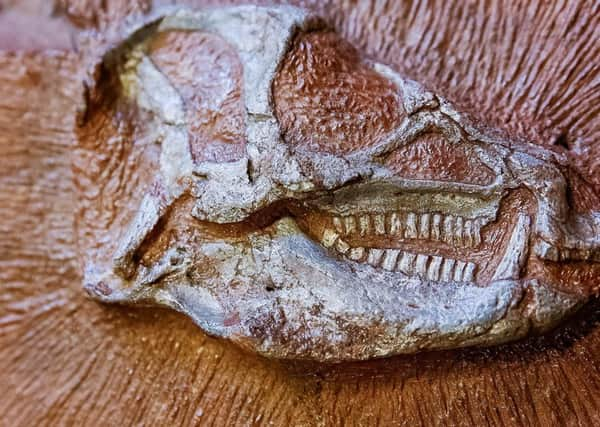Dinosaur fossils x-rayed to help solve prehistoric puzzle


Experts hope the unique project, at the ESRF European synchrotron facility in Grenoble, France, will help them understand how the creature lived 200 million years ago.
Heterodontosaurus tucki was a small dinosaur with decidedly odd teeth - grinding molars designed for munching plants at the back and vicious large canines at the front.
Advertisement
Hide AdAdvertisement
Hide AdScientists still do not know if H. tucki was a herbivore or omnivore, or whether its fangs were used for fighting rather than eating.
Over a period of five days, the team used X-rays 100 billion time brighter than those in hospitals to pick out the dinosaur’s bones from the rock they were embedded in and reconstruct its skeleton.
The X-rays were generated by the ESRF synchrotron, a machine which accelerates electrons to very high energy levels.
When electrons travel fast enough, they emit “light” at X-ray wavelengths.
Advertisement
Hide AdAdvertisement
Hide AdLead scientist Professor Jonah Choiniere, from the University of the Witwatersrand in Johannesburg, South Africa, said after seeing the first images: “Right away... we can tell quite a few things about the skull. One of the things is that it’s likely a juvenile: the skull bones aren’t strongly sutured together.
“We can also tell that we’re really able to reconstruct the skull very, very well. On the first scans we can see the openings in the skull, which are for the balance organs. We can digitally reconstruct the balance organs of the animal and tell how it held its head and how it interacted with its environment.
“That’s the sort of data you just can’t get by looking at a skull in 2d. So it’s very exciting.”